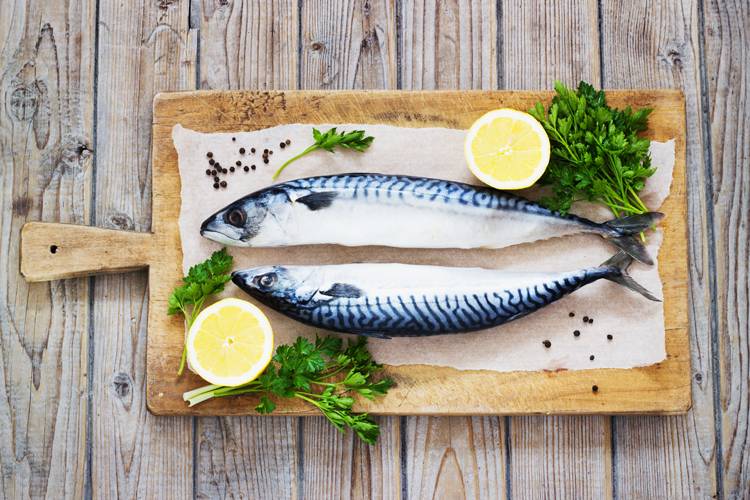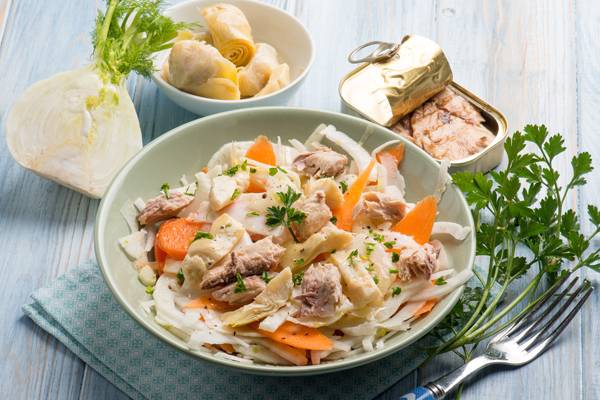The mackerel properties
Mackerel is a type of oily fish rich in Omega 3, helps to lower cholesterol and triglycerides . It’s mainly roasted on the barbecue, griddled, baked, grilled, smoked or used in a ‘papillote’.
fresh food
Share

Mackerel is a type of oily fish that belongs to the Scombrid family (the same family as tuna). It can be identified by its stripped skin in the dorsal area. It’s one of the most common fishes in the Atlantic and the Mediterranean. The ideal fishing season is from February to March. In winter, it remains at a depth of 170m and doesn’t eat, but during the warm months it rises to the surface, and that is when it’s caught.
Spain is the European country with the fourth largest catch, the largest being France. Mackerel is most popular in the Basque Country and Asturias.
There is another species that’s very similar to the mackerel, so much so that they’re sometimes confused. This is the chub mackerel, that can be differentiated by the size of the eyes (larger on the chub mackerel) or the silver colour of the ventral area, as the chub mackerel can have dark spots in that area.
A large part of the catch goes to the canning industry, where mackerel is conserved in vegetable oil or brine.

Nutritional properties
The mackerel, as an oily fish, is rich in Omega-3 fatty acids which contribute to lowering levels of cholesterol and triglycerides which prevent the formation of blood clots. Specifically, a 100 gram portion of this fish provides 10 grams of fat. This is a good source of protein of high biological value and contains different vitamins and minerals.
Amongst the vitamins found in this fish are B vitamins, of which stand out B12 and B6 which contribute to the correct functioning of the metabolism and nervous system. Vitamin D contributes to the absorption of calcium and phosphorous and the maintenance of bones and the correct functioning of the muscles.
Regarding the mineral content of mackerel, the most notable is the contribution of selenium and phosphorous. This fish provides you with practically 50% of your daily recommended intake of these nutrients and provides smaller quantities of minerals like potassium, iron and magnesium.
Tips for purchase and storage
Mackerel is a type of fish that has a relatively short shelf life, which is why it should be bought and consumed quickly. You’re recommended to choose fish that have firm meat and shiny skin. This is one of the cheapest fish. Larger mackerel generally tend to be valued more. They’re sold both whole and in fillets.
From the supermarket to the plate: tips from the chef
Mackerel should be consumed fresh. It’s mainly roasted on the barbecue, griddled, baked, grilled, smoked or used in a ‘papillote’.
Smaller mackerel can be used in a soup or marinated, whilst the larger ones are better roasted on the barbecue. But be careful, it’s best to make some longitudinal cuts in the skin so that they don’t burst during cooking. A chef’s trick, however you’re preparing the fish, is to never remove the skin as it’s well stuck to the flesh and taking it off will remove the piece of fish.






